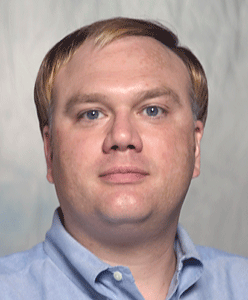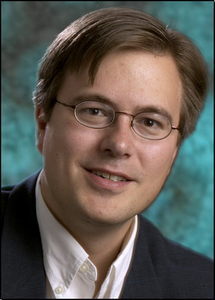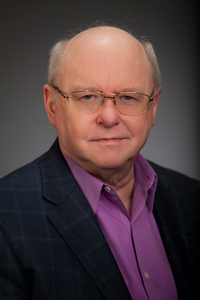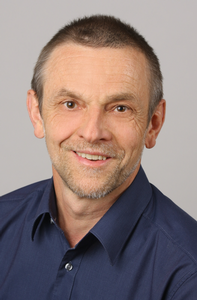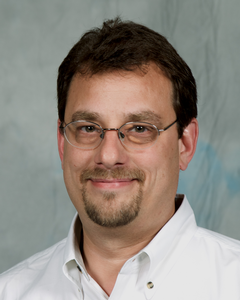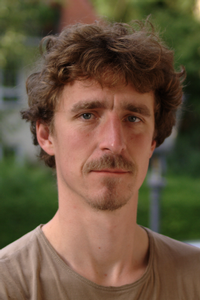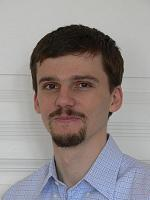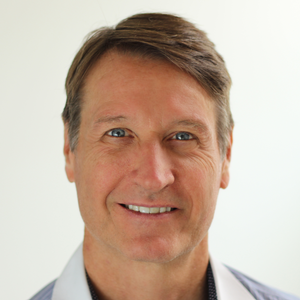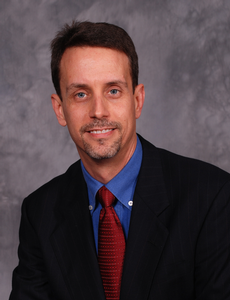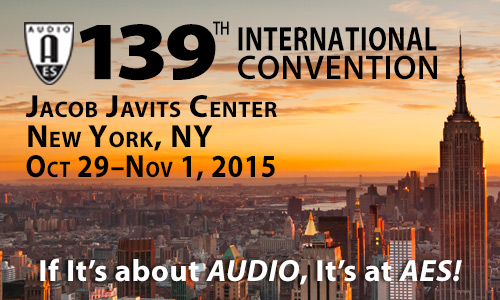
AES New York 2015
Product Development Track Event Details
Thursday, October 29, 9:00 am — 10:30 am (Room 1A13)
Product Development: PD1 - Almost Everything You Ever Wanted to Know about Loudspeaker Design
Presenter:Christopher Struck, CJS Labs - San Francisco, CA, USA; Acoustical Society of America
Abstract:
This tutorial will walk the audience through an entire loudspeaker design as well as introducing the basic concepts of loudspeakers. Equivalent circuits, impedance, and Thiele-Small Parameters are shown. Inherent driver nonlinearities are explained. The effects of modal behavior and cone breakup are demonstrated. Closed Box and Ported Box systems are analyzed and several design examples are meticulously worked through, both with hand calculations and using CAD. Passive Radiator, Band Pass, and Transmission Line systems are also shown. Issues with multiple drivers and cabinet construction are discussed. Directivity and diffraction effects are illustrated. Crossover network design fundamentals are presented, with a specific design example for the previously shown ported enclosure design.
Thursday, October 29, 10:45 am — 12:15 pm (Room 1A13)
Product Development: PD2 - Practical Loudspeaker Processing for the Practicing Engineer
Presenter:Paul Beckmann, DSP Concepts, LLC - Sunnyvale, CA, USA
Abstract:
Loudspeaker signal processing is making the transition from traditional analog designs to digital processing. This is being driven by the availability of digital content, the desire to have wireless products, and the promise of improved sound through digital signal processing. We cover the main concepts behind digital audio processing for loudspeakers. We use a hands-on approach and interactively build up the signal chain using graphical tools. We discuss crossovers, equalizers, limiters, and perceptual loudness controls. Key concepts are reinforced through examples and real-time demos. The session is aimed at the practicing audio engineer and we go easy on math and theory. Instead of writing code we leverage modern design tools and you will leave ready to design your own processing chain.
Thursday, October 29, 11:00 am — 12:45 pm (Room 1A12)
Live Sound Seminar: LS1 - AC Power and Grounding
Chair:Mike Sokol, NoShockZone.org; Shenandoah University
Panelists:
Steve Lampen, Belden - San Francisco, CA, USA
Bill Sacks, Orban / Optimod Refurbishing - Hollywood, MD, USA
Abstract:
Much misinformation remains about what is needed for AC power for events—much of it potentially life-threatening advice. This panel will discuss how to provide AC power properly and safely and without causing noise problems. The session will cover power for small to large systems, from a couple boxes on sticks up to multiple stages in ballrooms, road houses, and event centers; large scale installed systems, including multiple transformers and company switches, service types, generator sets, 1ph, 3ph, 240/120 208/120. Get the latest information on grounding and proper power configurations by this panel of industry veterans
Thursday, October 29, 12:00 pm — 12:45 pm (Room 1A07)
Engineering Brief: EB1 - Transducers—Part 1
Chair:
Michael Smithers, Dolby Laboratories - Sydney, NSW, Australia
EB1-1 Wireless Speaker Synchronization: Solved—Simon Forrest, Imagination Technologies - Hertfordshire, UK
Many high-end stereo systems offer the opportunity to connect several speakers together wirelessly to create a multi-room audio experience. However, linking speakers wirelessly to create stereo pairs or surround sound systems is technically challenging, due to the extremely tight synchronization necessary to accurately reproduce a faithful sound stage and maintain channel separation. Imagination measures several competing technologies on the market today and illustrates how innovative application of Wi-Fi networking protocols in audio chips can deliver several orders of magnitude improvement, creating opportunity for high quality wireless audio and producing results that are indistinguishable from wired speaker systems.
Engineering Brief 202 (Download now)
EB1-2 Multiphysical Simulation Methods for Loudspeakers—Advanced CAE-Based Simulations of Vibration Systems—Alfred Svobodnik, Konzept-X GmbH - Karlsruhe, Germany; Roger Shively, JJR Acoustics, LLC - Seattle, WA, USA; Marc-Olivier Chauveau, Moca Audio - Tours, France; Tommaso Nizzoli, Acoustic Vibration Consultant - Reggio Emilia, Italy; Dieter Thöres, Konzept-X GmbH - Karlsruhe, Germany
This is the second in a series of papers on the details of loudspeaker design using multiphysical computer aided engineering simulation methods. In this paper the simulation methodology for accurately modeling the structural dynamics of loudspeaker’s vibration systems will be presented. Primarily, the calculation of stiffness, or its inverse the compliance in the virtual world, will be demonstrated. Furthermore, the predictive simulation of complex vibration patterns, e.g., rocking or break-up, will be shown. Finally the simulation of coupling effects to the motor system will be discussed. Results will be presented, correlating the simulated model results to the measured physical parameters. From that, the important aspects of the modeling that determine its accuracy will be discussed.
Engineering Brief 203 (Download now)
EB1-3 New Design Methodologies in Mark Levinson Amps—Todd Eichenbaum, Harman Luxury Audio - Shelton, CT, USA
The HARMAN Luxury Audio electronics engineering team has designed a completely new generation of Mark Levinson amplifiers. Combining tried-and-true technologies with innovative implementations and unique
improvements has yielded products with exemplary measured and subjective performance. In this article are circuit design highlights of the No536, a fully balanced mono power amplifier rated for 400W/8 ohms and 800W/4 ohms.
Engineering Brief 204 (Download now)
Thursday, October 29, 2:15 pm — 3:45 pm (Room 1A13)
Product Development: PD3 - Designing for Ultra-Low THD+N in Analog Circuits, circa 2015
Presenter:Bruce Hofer, Audio Precision, Inc. - Beaverton, Oregon, USA
Abstract:
The performance of ultra-low THD+N in analog circuits is more often limited by component quality and component interaction, rather than the circuit design itself. Factors such as thermal modulation and the effects of component voltage coefficient are commonly over-looked, yet they may be the dominant source of non-linearity in some circuits. This presentation will focus on modeling and quantifying these non-linear effects that will hopefully enable the analog design engineer to achieve higher levels of performance. Among the many topics covered, the various types of resistors and capacitors will be compared with a particular emphasis regarding their impact on THD+N. There will also be a discussion of op-amps along with some suggested circuit “tricks” to minimize distortion contribution. Noise and its estimation will also be covered along with some examples of how to keep digital noise sources from finding their way into critical analog circuits. The sometimes surprising effects of mutual inductance between circuit components and power supply rails will also be discussed along with how these can be minimized by good circuit layout practices. This tutorial is highly recommended for the analog design engineer interested in taking their designs to a significantly higher level of performance.
Thursday, October 29, 2:30 pm — 5:30 pm (Room 1A08)
Paper Session: P4 - Transducers—Part 1: Headphones, Amplifiers, and Microphones
Chair:
Christopher Struck, CJS Labs - San Francisco, CA, USA; Acoustical Society of America
P4-1 Headphone Response: Target Equalization Trade-offs and Limitations—Christopher Struck, CJS Labs - San Francisco, CA, USA; Acoustical Society of America; Steve Temme, Listen, Inc. - Boston, MA, USA
The effects of headphone response and equalization are examined with respect to the influence on perceived sound quality. Free field, diffuse field, and hybrid real sound field targets are shown and objective response data for a number of commercially available headphones are studied and compared. Irregular responses are examined to determine the source of response anomalies, whether these can successfully be equalized and what the limitations are. The goal is to develop a robust process for evaluating and appropriately equalizing headphone responses to a psychoacoustically valid target and to understand the constraints.
Convention Paper 9374 (Purchase now)
P4-2 A Headphone Measurement System Covers both Audible Frequency and beyond 20 kHz—Naotaka Tsunoda, Sony Corporation - Shinagawa-ku, Tokyo, Japan; Takeshi Hara, Sony Corporation - Tokyo, Japan; Koji Nageno, Sony Corporation - Tokyo, Japan
New headphone measurement system consisting of a 1/8” microphone and newly developed HATS (Head And Torso Simulator) with a coupler that have realistic ear canal shape is proposed to enable entire frequency response measurement from audible frequency and higher frequency area up to 140 kHz. At the same time a new frequency response evaluation scheme based on HRTF correction is proposed. Measurement results obtained by this scheme enables much better understanding by enabling direct comparison with free field loudspeaker frequency response.
Convention Paper 9375 (Purchase now)
P4-3 Measurements of Acoustical Speaker Loading Impedance in Headphones and Loudspeakers—Jason McIntosh, McIntosh Applied Engineering - Eden Prairie, MN, USA
The acoustical design of two circumaural headphones and a desktop computer speaker have been studied by measuring the acoustical impedance of the various components in their design. The impedances were then used to build an equivalent circuit model for the devices that then predicted their pressure response. There was seen to be good correlation between the model and measurements. The impedance provides unique insight into the acoustic design that is not observed though electrical impedance or pressure response measurements that are commonly relied upon when designing such devices. By building models for each impedance structure, it is possible to obtain an accurate model of the whole system where the effects of each component upon the device's overall performance can be seen.
Convention Paper 9376 (Purchase now)
P4-4 Efficiency Investigation of Switch-Mode Power Audio Amplifiers Driving Low Impedance Transducers—Niels Elkjær Iversen, Technical University of Denmark - Lyngby, Denmark; Henrik Schneider, Technical University of Denmark - Kgs. Lyngby, Denmark; Arnold Knott, Technical University of Denmark - Kgs. Lyngby, Denmark; Michael A. E. Andersen, Technical University of Denmark - Kgs. Lyngby, Denmark
The typical nominal resistance span of an electro dynamic transducer is 4 Ohms to 8 Ohms. This work examines the possibility of driving a transducer with a much lower impedance to enable the amplifier and loudspeaker to be directly driven by a low voltage source such as a battery. A method for estimating the amplifier rail voltage requirement as a function of the voice coil nominal resistance is presented. The method is based on a crest factor analysis of music signals and estimation of the electrical power requirement from a specific target of the sound pressure level. Experimental measurements confirm a huge performance leap in terms of efficiency compared to a conventional battery-driven sound system. Future optimization of low voltage, high current amplifiers for low impedance loudspeaker drivers are discussed.
Convention Paper 9377 (Purchase now)
P4-5 Self-Oscillating 150 W Switch-Mode Amplifier Equipped with eGaN-FETs—Martijn Duraij, Technical University of Denmark - Lyngby, Denmark; Niels Elkjær Iversen, Technical University of Denmark - Lyngby, Denmark; Lars Press Petersen, Technical University of Denmark - Kgs. Lyngby, Denmark; Patrik Boström, Bolecano Holding AB - Helsingborg, Sweden
Where high-frequency clocked system switch-mode audio power amplifiers equipped with eGaN-FETs have been introduced in the past years, a novel self-oscillating eGaN-FET equipped amplifier is presented. A 150 Wrms amplifier has been built and tested with regard to performance and efficiency with an idle switching frequency of 2 MHz. The amplifier consists of a power-stage module with a self-oscillating loop and an error-reducing global loop. It was found that an eGaN-FET based amplifier shows promising potential for building high power density audio amplifiers with excellent audio performance. However care must be taken of the effects caused by a higher switching frequency.
Convention Paper 9378 (Purchase now)
P4-6 Wind Noise Measurements and Characterization Around Small Microphone Ports—Jason McIntosh, Starkey Hearing Technologies - Eden Prairie, MN, USA; Sourav Bhunia, Starkey Hearing Technologies - Eden Prairie, MN, USA
The physical origins of microphone wind noise is discussed and measured. The measured noise levels are shown to correlate well to theoretical estimates of non-propagating local fluid dynamic turbulence pressure variations called “convective pressure.” The free stream convective pressure fluctuations may already be present in a flow independent of its interactions with a device housing a microphone. Consequently, wind noise testing should be made in turbulent air flows rather than laminar. A metric based on the Speech Intelligibility Index (SII) is proposed for characterizing wind noise effects for devices primarily designed to work with speech signals, making it possible to evaluate nonlinear processing effects on reducing wind noise on microphones.
Convention Paper 9379 (Purchase now)
Thursday, October 29, 4:00 pm — 5:30 pm (Room 1A13)
Product Development: PD4 - Electrical and Mechanical Measurement of Sound System Equipment
Presenter:Wolfgang Klippel, Klippel GmbH - Dresden, Germany
Abstract:
This tutorial explains the physical background and practical motivation for a new measurement standard replacing the IEC 60268-5 applicable to all kinds of transducers, loudspeakers, and other sound reproduction systems. The focus are electrical and mechanical measurements (part B) complementing the acoustical measurements (part A) presented at the 137th AES convention in LA last year. Voltage and current measured at the electrical terminals provide not only the electrical input impedance but also meaningful parameters of linear, nonlinear, and thermal models describing the behavior of the transducer in the small and large signal domain. This standard addresses long-term testing to assess power handling, heating process, product reliability, and climate impact. New mechanical characteristics are derived from laser scanning techniques that are the basis for modal analysis of cone vibration and predicting the acoustical output.
Friday, October 30, 9:00 am — 10:30 am (Room 1A10)
Broadcast and Streaming Media: B4 - Audio and IP: Are We There Yet?
Moderator:Steve Lampen, Belden - San Francisco, CA, USA
Panelists:
Kevin Gross, AVA Networks - Boulder, CO, USA
David Josephson, Josephson Engineering, Inc. - Santa Cruz, CA, USA
Dan Mortensen, Dansound Inc. - Seattle, WA, USA
Tony Peterle, Worldcast Systems - Miami, FL, USA
Tim Pozar, Fandor - San Francisco, CA, USA
Abstract:
In 2010, Reed Hundt, former head of the Federal Communications Commission, said in a speech at Columbia Business School, [We] “decided in 1994 that the Internet should be the common medium in the United States and broadcast should not be.” This was twenty-one years ago. So, are we there yet? I tried to invite Mr. Hundt to participate on this panel, but he is too well protected, I couldn’t even get an invitation to him.
This panel of esteemed experts will look at the “big picture” of audio in networked formats and internet delivery systems. Do we have the hardware and software we need? If not, what is missing? Can we expect the same quality, consistency, and reliability as we had in the old analog audio days? There are dozens, maybe hundreds, of companies using proprietary Layer 2/Layer 3 Ethernet for audio, and there is much work on combining or cross-fertilizing these systems, such as Dante and Ravenna. There are also new standards such as IEEE 802.1BA-2011 AVB (Audio-Video Bridging), and IEEE 802.1ASbt TSN (Time-Sensitive Networks) that use specialized Ethernet switches in a network architecture. But these do not address anything outside of the Ethernet network itself. Then we have AES IP67, specifically looking at “high performance” IP-based audio.
Mixed in with this is the question “What is a broadcaster? Do you have to have a transmitter to be a broadcaster?” Consider that next year (2016) one company claims they will be the largest broadcaster in the world, and that company is Netflix.
Friday, October 30, 9:00 am — 10:30 am (Room 1A13)
Product Development: PD5 - Best Practices in Production Test
Presenter:Jonathan Novick, Audio Precision - Camarillo, CA, USA
Abstract:
Production test is an integral part of bringing quality products to market. It can also be time consuming, expensive, and produce inconsistent and confusing results. There is constant pressure to increase quality, track data, reduce test times, and reduce investment in the testing—goals that often conflict with each other. Modern measurement techniques based on best practices, standards, and available technology can provide a high degree of consistency, quality with low test times. In today’s diverse product organizations, it is also important to be able to communicate test specifications and results across engineering, product management, manufacturing, and supply chain. This session explores the trade-offs one must consider when implementing new test methodologies. Real-world case studies will be discussed and comparisons made between different approaches. This session will also discuss the benefits and caveats of various test approaches and how a good test strategy can become a competitive advantage.
Friday, October 30, 9:00 am — 12:30 pm (Room 1A08)
Paper Session: P6 - Transducers—Part 2: Loudspeakers
Chair:
Sean Olive, Harman International - Northridge, CA, USA
P6-1 Wideband Compression Driver Design, Part 1: A Theoretical Approach to Designing Compression Drivers with Non-Rigid Diaphragms—Jack Oclee-Brown, GP Acoustics (UK) Ltd. - Maidstone, UK
This paper presents a theoretical approach to designing compression drivers that have non-rigid radiating diaphragms. The presented method is a generalization of the Smith "acoustic mode balancing" approach to compression driver design that also considers the modal behavior of radiating structure. It is shown that, if the mechanical diaphragm modes and acoustical cavity modes meet a certain condition, then the diaphragm non-rigidity is not a factor that limits the linear driver response. A theoretical compression driver design approximately meeting this condition is described and it's performance evaluated, using FEM models.
Convention Paper 9386 (Purchase now)
P6-2 Time/Phase Behavior of Constant Beamwidth Transducer (CBT) Circular-Arc Loudspeaker Line Arrays—D.B. (Don) Keele, Jr., DBK Associates and Labs - Bloomington, IN, USA
This paper explores the time and phase response of circular-arc CBT arrays through simulation and measurement. Although the impulse response of the CBT array is spread out in time, it’s phase response is found to be minimum phase at all locations in front of the array: up-down, side-to-side, and near-far. When the magnitude response is equalized flat with a minimum-phase filter, the resultant phase is substantially linear phase over a broad frequency range at all these diverse locations. This means that the CBT array is essentially time aligned and linear phase and as a result will accurately reproduce square waves anywhere within its coverage. Accurate reproduction of square waves is not necessarily audible but many people believe that it is an important loudspeaker characteristic. The CBT array essentially forms a virtual point-source but with the extremely-uniform broadband directional coverage of the CBT array itself. When the CBT array is implemented with discrete sources, the impulse response mimics a FIR filter but with non-linear sample spacing and with a shape that looks like a roller coaster track viewed laterally. An analysis of the constant-phase wave fronts generated by a CBT array reveals that the sound waves essentially radiate from a point that is located at the center of curvature of the array’s circular arc and are essentially circular at all distances, mimicking a point source.
Convention Paper 9387 (Purchase now)
P6-3 Progressive Degenerate Ellipsoidal Phase Plug—Charles Hughes, Excelsior Audio - Gastonia, NC, USA; AFMG - Berlin, Germany
This paper will detail the concepts and design of a new phase plug. This device can be utilized to transform a circular planar wave front to a rectangular planar wave front. Such functionality can be very useful for line array applications as well as for feeding the input, or throat section, of a rectangular horn from the output of conventional compression drivers. The design of the phase plug allows for the exiting wave front to have either concave or convex curvature if a planar wave front is not desired. One of the novel features of this device is that there are no discontinuities within the phase plug.
Convention Paper 9388 (Purchase now)
P6-4 Low Impedance Voice Coils for Improved Loudspeaker Efficiency—Niels Elkjær Iversen, Technical University of Denmark - Lyngby, Denmark; Arnold Knott, Technical University of Denmark - Kgs. Lyngby, Denmark; Michael A. E. Andersen, Technical University of Denmark - Kgs. Lyngby, Denmark
In modern audio systems utilizing switch-mode amplifiers the total efficiency is dominated by the rather poor efficiency of the loudspeaker. For decades voice coils have been designed so that nominal resistances of 4 to 8 Ohms is obtained, despite modern audio amplifiers, using switch-mode technology, can be designed to much lower loads. A thorough analysis of the loudspeaker efficiency is presented and its relation to the voice coil fill factor is described. A new parameter, the drivers mass ratio, is introduced and it indicates how much a fill factor optimization will improve a driver’s efficiency. Different voice coil winding layouts are described and their fill factors analyzed. It is found that by lowering the nominal resistance of a voice coil, using rectangular wire, one can increase the fill factor. Three voice coils are designed for a standard 10” woofer and corresponding frequency responses are estimated. For this woofer it is shown that the sensitivity can be improved approximately 1 dB, corresponding to a 30% efficiency improvement, just by increasing the fill factor using a low impedance voice coil with rectangular wire.
Convention Paper 9389 (Purchase now)
P6-5 Effectiveness of Exotic Vapor-Deposited Coatings on Improving the Performance of Hard Dome Tweeters—Peter John Chapman, Harman - Denmark; Bang & Olufsen Automotive
The audio industry is constantly striving for new and different methods with which to improve the sound quality and performance of components in the signal chain. In many cases however, insufficient evidence is provided for the benefit of so-called improvements. This paper presents the results of a scientific study to analyze the effectiveness of applying vapor-deposited diamond-like-carbon, chromium, and chromium nitride coatings to aluminum and titanium hard dome tweeters. Careful attention was paid during the processing, assembly, and measurement of the tweeters to ensure a control and equal influence of other factors such that a robust analysis could be made. The objective results were supplemented with listening tests between the objectively most significant change and the control.
Convention Paper 9390 (Purchase now)
P6-6 Wideband Compression Driver Design. Part 2, Application to a High Power Compression Driver with a Novel Diaphragm Geometry—Mark Dodd, Celestion - Ipswich, Suffolk, UK
Performance limitations of high-power wide-bandwidth conventional and co-entrant compression drivers are briefly reviewed. An idealized co-entrant compression driver is modeled and acoustic performance limitations discussed. The beneficial effect of axisymmetry is illustrated using results from numerical models. Vibrational behavior of spherical-cap, conical, and bi-conical diaphragms are compared. Axiperiodic membrane geometries consisting of circular arrays of features are discussed. This discussion leads to the conclusion that, for a given feature size, annular axiperiodic diaphragms have vibrational properties mostly dependent on the width of the annulus rather than it's diameter. Numerically modeled and measured acoustic performance of a high-power wide-bandwidth compression driver using an annular axiperiodic membrane, with vibrational and acoustic modes optimized, is discussed.
Convention Paper 9391 (Purchase now)
P6-7 Dual Diaphragm Asymmetric Compression Drivers—Alexander Voishvillo, JBL/Harman Professional - Northridge, CA, USA
A theory of dual compression drivers was described earlier and the design was implemented in several JBL Professional loudspeakers. This type of driver consists of two motors and two annular diaphragms connected through similar phasing plugs to the common acoustical load. The new concept is based as well on two motors and acoustically similar phasing plugs but the diaphragms are mechanically “tuned” to different frequency ranges. Summation of acoustical signals on common acoustical load provides extended frequency range compared to the design with identical diaphragms. Theoretically maximum overall SPL sensitivity is achieved by the in-phase radiation of the diaphragms. Principles of operation of the new dual asymmetric driver are explained using a combination of matrix analysis, finite elements analysis, and data obtained from a scanning vibrometer and the electroacoustic measurements are presented. Comparison of the performance of these dual drivers and the earlier fully symmetric designs is provided.
Convention Paper 9392 (Purchase now)
Friday, October 30, 10:45 am — 12:15 pm (Room 1A13)
Product Development: PD6 - What Happens in a Patent Lawsuit
Presenters:John Strawn, S Systems Inc. - Larkspur, CA, USA
Tom Millikan, Perkins Coie LLP - San Diego, CA, USA
Abstract:
This session covers the mechanics of patent lawsuits and what you can expect when you are involved, whether you are an owner, manager, engineer, or employee. We will cover the basic steps including: starting a lawsuit; proving a product infringes a patent, proving a patent is invalid, using experts to show infringement or invalidity; deposing experts and company personnel; asking the judge to end the case; limiting what information is available at trial, and trying a case. There will be a detour through the recently established procedures to challenge patents at the patent office rather than in court. The presentation will involve real-world experience, including our work in what was the largest audio patent case in US history—Lucent v. Microsoft—where the MP3 standard itself was on trial for patent infringement. We will present information on how often and at what stage cases settle, as most do. And we will share insights on how to win.
Friday, October 30, 12:00 pm — 1:00 pm (Room 1A07)
Engineering Brief: EB3 - Transducers—Part 2
Chair:
Michael Smithers, Dolby Laboratories - Sydney, NSW, Australia
EB3-1 Dual Filtering Technique for Speech Signal Enhancements—Mahdi Ali, Hyundai America Technical Center, Inc. - Superior Township, MI, USA
Hands free applications in automobiles, such as voice recognition and Bluetooth communications, have been one of the great features added to vehicles’ infotainment systems. However, cabin and road noises degrade audio quality and negatively impact consumers’ experience. Research has been conducted and several noise reduction techniques have been proposed. However, due to the complexity of noise environments inside and outside vehicles, the hands free sounds quality still poses an issue for consumers. This continuously existed problem requires more research in this field. This paper proposes a novel technique to reduce noise and enhance voice recognition and Bluetooth audio quality in vehicles’ hands free applications. It utilizes the dual Kalman Filtering (KF) technique to suppress noise. This method has been validated using a MATLAB/SIMULINK simulation environment, which showed improvements in noise reductions in both Gaussian and non-Gaussian environments.
Engineering Brief 209 (Download now)
EB3-2 Implementation of Segmented Circular-Arc Constant Beamwidth Transducer (CBT) Loudspeaker Arrays—D.B. (Don) Keele, Jr., DBK Associates and Labs - Bloomington, IN, USA
Circular-arc loudspeaker line arrays composed of multiple loudspeaker sources are used very frequently in loudspeaker applications to provide uniform vertical coverage [1, 2, and 4]. To simplify these arrays, the arrays may be formed using multiple straight-line segments or individual straight-line arrays. This approximation has errors because some of the speakers are now no longer located on the circular arc and exhibit a “bulge error.” This error decreases as the number of segments increase or the splay angle of an individual straight segment is decreased.
The question is: How small does the segment splay angle have to be so that the overall performance is not compromised compared to the non-segmented version of the array? Based on two simple spacing limitations that govern the upper operating frequency for each type of array, this paper shows that the bulge deviation should be no more than about one-fourth the center-to-center spacing of the sources located on each straight segment and that surprisingly, the maximum splay angle and array radius depends only on the number (N) of equally-spaced sources that are on a straight segment. As the number of sources on a segment increases, the maximum segment splay angle decreases and the required minimum array radius of curvature increases. Design guidelines are presented that allow the segmented array to have nearly the same performance as the accurate circular arc array.
Engineering Brief 210 (Download now)
EB3-3 Speech Intelligibility Advantages Using an Acoustic Beamformer Display—Durand Begault, NASA Ames Research Center - Moffet Field, CA, USA; Kaushik Sunder, NASA Ames Research Center - Moffet Field, CA, USA; San Jose State University Foundation - San Jose, CA, USA; Martine Godfroy, NASA Ames Research Center - Moffett Field, CA, USA; San Jose State University Foundation; Peter Otto, UC San Diego - La Jolla, CA, USA
A speech intelligibility test conforming to the Modified Rhyme Test of ANSI S3.2 “Method for Measuring the Intelligibility of Speech Over Communication Systems” was conducted using a prototype 12-channel acoustic beamformer system. The target speech material (signal) was identified against speech babble (noise), with calculated signal-noise ratios of 0, 5 and 10 dB. The signal was delivered at a fixed beam orientation of 135 degrees (re 90 degrees as the frontal direction of the array) and the noise at 135 (co-located) and 0 degrees (separated). A significant improvement in intelligibility from 58% to 75% was found for spatial separation for the same signal-noise ratio (0 dB). Significant effects for improved intelligibility due to spatial separation were also found for higher signal-noise ratios.
Engineering Brief 211 (Download now)
EB3-4 Designing Near-Field MVDR Acoustic Beamfomers for Voice User Interfaces—Andrew Stanford-Jason, XMOS Ltd. - Bristol, UK
We present an analysis and design recommendations for a reduced computational complexity minimum variance distortionless response(MVDR) beamforming microphone. An overview of MVDR beamforming is given then decomposed into a generalized implementation to aid mapping to a microcontroller with some discussion of optimizations for real-world performance.
Engineering Brief 212 (Download now)
Friday, October 30, 2:00 pm — 5:00 pm (Room 1A08)
Paper Session: P9 - Transducers—Part 3: Loudspeakers
Chair:
Peter John Chapman, Harman - Denmark; Bang & Olufsen Automotive
P9-1 A Model for the Impulse Response of Distributed-Mode Loudspeakers and Multi-Actuator Panels—David Anderson, University of Rochester - Rochester, NY, USA; Mark F. Bocko, University of Rochester - Rochester, NY, USA
Panels driven into transverse (bending) vibrations by one or more small force drivers are a promising alternative approach in loudspeaker design. A mechanical-acoustical model is presented here that enables computation of the acoustic transient response of such loudspeakers driven by any number of force transducers at arbitrary locations on the panel and at any measurement point in the acoustic radiation field. Computation of the on- and off-axis acoustic radiation from a panel confirms that the radiated sound is spatially diffuse. Unfortunately, this favorable feature of vibrating panel loudspeakers is accompanied by significant reverberant effects and such loudspeakers are poor at reproducing signals with rapid transients.
Convention Paper 9409 (Purchase now)
P9-2 Loudspeaker Rocking Modes (Part 1: Modeling)—William Cardenas, Klippel GmbH - Dresden, Germany; Wolfgang Klippel, Klippel GmbH - Dresden, Germany
The rocking of the loudspeaker diaphragm is a severe problem in headphones, micro-speakers, and other kinds of loudspeakers causing voice coil rubbing that limits the maximum acoustical output at low frequencies. The root causes of this problem are small irregularities in the circumferential distribution of the stiffness, mass, and magnetic field in the gap. A dynamic model describing the mechanism governing rocking modes is presented and a suitable structure for the separation and quantification of the three root causes exciting the rocking modes is developed. The model is validated experimentally for the three root causes and the responses are discussed conforming a basic diagnostics analysis.
Convention Paper 9410 (Purchase now)
P9-3 Active Transducer Protection Part 1: Mechanical Overload—Wolfgang Klippel, Klippel GmbH - Dresden, Germany
The generation of sufficient acoustical output by smaller audio systems requires maximum exploitation of the usable working range. Digital preprocessing of audio input signals can be used to prevent a mechanical or thermal overload generating excessive distortion and eventually damaging the transducer. The first part of two related papers focuses on the mechanical protection defining useful technical terms and the theoretical framework to compare existing algorithms and to develop meaningful specifications required for the adjustment of the protection system to the particular transducer. The new concept is illustrated with a micro-speaker and the data exchange and communication between transducer manufacturer, software provider, and system integrator are discussed.
Convention Paper 9411 (Purchase now)
P9-4 Horns Near Reflecting Boundaries—Bjørn Kolbrek, Norwegian University of Science and Technology - Trondheim, Norway
It is well known that when a sound source is placed near one or more walls, the power output increases due to the mutual coupling between the source and its image sources. This is reflected in an increase in the low frequency radiation resistance as seen by the sources. While direct radiating loudspeakers may benefit from this whenever the sources are within about a quarter wavelength of each other, horns will behave differently depending on if the increase in radiation resistance comes within the pass band of the horn or not. This has implications for the placement of corner horns. In this paper the Mode Matching Method (MMM) is used together with the modal mutual radiation impedance and the concept of image sources to compute the throat impedance and radiated sound pressure of horns placed near infinite, perpendicular reflecting boundaries. The MMM is compared with another numerical method, the Boundary Element Rayleigh Integral Method (BERIM), and with measurements and is shown to give good agreement with both. The MMM also has significantly shorter computation time than BERIM, making it attractive for use for the initial iterations of a design, or for optimization procedures.
Convention Paper 9412 (Purchase now)
P9-5 State-Space Modeling of Loudspeakers Using Fractional Derivatives—Alexander King, Technical University of Denmark - Kgs. Lyngby, Denmark; Finn T. Agerkvist, Technical University of Denmark - Kgs. Lyngby, Denmark
This work investigates the use of fractional order derivatives in modeling moving-coil loudspeakers. A fractional order state-space solution is developed, leading the way towards incorporating nonlinearities into a fractional order system. The method is used to calculate the response of a fractional harmonic oscillator, representing the mechanical part of a loudspeaker, showing the effect of the fractional derivative and its relationship to viscoelasticity. Finally, a loudspeaker model with a fractional order viscoelastic suspension and fractional order voice coil is fit to measurement data. It is shown that the identified parameters can be used in a linear fractional order state-space model to simulate the loudspeakers’ time domain response.
Convention Paper 9413 (Purchase now)
P9-6 Comparative Static and Dynamic FEA Analysis of Single and Dual Voice Coil Midrange Transducers—Felix Kochendörfer, JBL/Harman Professional - Northridge, CA USA; Alexander Voishvillo, JBL/Harman Professional - Northridge, CA, USA
The concept of the dual coil direct-radiating loudspeakers have been known for several decades. JBL Professional pioneered in design and application of dual coil woofers and midrange loudspeakers. There are several properties of the dual coil transducers that differentiate them from the traditional single voice coil design. First is the better heat dissipation—the dual coil may be considered as a traditional coil slit in two parts and each one is positioned into its own magnetic gap. Second is the symmetry of the force factor (Bl product) versus position of the voice coils in their gaps. It is explained by the fact that one coil leaves its gap the other one on contrary enters its gap. These two features are well researched and described in literature [1,2]. Less is known about advantage of the dual coil transducers related to the flux modulation and dependence of the alternating magnetic flux (and corresponding voice coil inductance) on frequency, current, and voice coil positions. In this work comparison of a regular single coil design and dual coil configuration is carried out through dynamic magnetic FEA modeling and measurements.
Convention Paper 9414 (Purchase now)
Saturday, October 31, 9:00 am — 10:30 am (Room 1A20)
Standard: Loudspeaker Modeling and Measurement
Saturday, October 31, 9:00 am — 10:30 am (Room 1A13)
Product Development: PD7 - Modern Digital Processing of Microphone Signals
Presenter:Paul Beckmann, DSP Concepts, LLC - Sunnyvale, CA, USA
Abstract:
Microphones have been in use for decades in professional audio applications. Recently they are also being incorporated into consumer and automotive products and their use is exploding. And although they are ubiquitous they are usually the weakest link in the audio signal chain. Common problems include dynamic range issues (too loud or too soft) and noise (electrical noise, background noise, wind, and plosives and sybillants). This session covers modern digital approaches to microphone processing. We use an interactive approach and build up the signal chain using graphical tools. We design single and multiband automatic gain controls, noise gates, and dynamics processors for reducing plosives and handling noise (“de-poppers”). We show how these algorithms are designed and tuned in practice.
Saturday, October 31, 10:45 am — 12:15 pm (Room 1A13)
Product Development: PD8 - Adaptive Loudspeaker Control—An Application Tutorial
Presenter:Gregor Hoehne, Klippel GmbH - Dresden, Germany
Abstract:
Adaptive control provides new potential for speaker design. Digital preprocessing of the electrical input signal can used to equalize, linearize, stabilize, and actively protect the transducer against overload. The control technology allows the exploitation of all hardware resources, which makes the transducer smaller, lighter, and more cost effective. This workshop gives an insight into adaptive loudspeaker control by presenting the Klippel Control Technology and demonstrates how it can be utilized by transducer and system engineers. An introduction into the theory of adaptive nonlinear control is given, but the focus lies on how the technique can be integrated into a system design. This comprises the selection of suitable transducers, the derivation of protection limits and the adjustment of the system alignment. A strong emphasis lies on the evaluation of an adaptive controlled loudspeaker system. Various methods for evaluating the transducer protection system, the reduction of nonlinear distortion and the compensation of ageing-effects are discussed and demonstrated.
Saturday, October 31, 11:00 am — 12:00 pm (Room 1A19)
TC Meeting: Loudspeakers and Headphones
Saturday, October 31, 2:45 pm — 4:15 pm (Room 1A13)
Product Development: PD9 - Creating High-Resolution Modeling Data for Loudspeakers and Line Arrays
Presenter:Stefan Feistel, AFMG Technologies GmbH - Berlin, Germany
Abstract:
This tutorial will discuss all important aspects of developing and publishing loudspeaker data, e.g., GLL files, for sound system modeling and optimization software. Particular focus will be put on the business aspects and technical implications of data acquisition, loudspeaker data formats, certification, and distribution to end users. It is demonstrated how mechanical information, acoustic measurements, and DSP configuration merge into one encompassing data set that describes a loudspeaker system as a whole. It is also explained how DSP control software and other tools can directly interface with modeling and optimization software in order to simplify workflows and improve user experience. Finally, typical application scenarios and best practices are discussed. Examples will be given using EASE, Focus, and Evac software.
Saturday, October 31, 3:15 pm — 4:45 pm (Room 1A14)
Networked Audio: N8 - How to Get AES67 into Your Systems/Products
Chair:Andreas Hildebrand, ALC NetworX GmbH - Munich, Germany
Panelists:
Michael Dosch, Lawo AG - Rastatt Germany
Nathan Phillips, Coveloz Technologies - Ottawa, ON, Canada
Greg Shay, The Telos Alliance - Cleveland, OH, USA
Nicolas Sturmel, Digigram S.A. - Montbonnot, France
Arie van den Broek, Archwave Technologies - Schwerzenbach, Switzerland
Kieran Walsh, Audinate Pty. Ltd. - Ultimo, NSW, Australia
Abstract:
This workshop introduces several options to implement AES67 networking capabilities into existing or newly designed products. The session starts with a quick recap on the technical ingredients of AES67 and points out the principal options on implementing AES67 into new or existing products. After providing an overview on commercially available building blocks (modules, software libraries and reference designs), the workshop commences in a discussion on the value of providing AES67 compatibility from the perspective of providers of existing AoIP networking solutions. The workshop is targeted towards product manufacturers seeking ways to implement AES67 into their products, but should also provide valuable insight to those with general technical interest in AES67.
Saturday, October 31, 3:45 pm — 4:15 pm (Room 1A07)
Engineering Brief: EB5 - Acoustics
Chair:
Jung Wook (Jonathan) Hong, McGill University - Montreal, QC, Canada; GKL Audio Inc. - Montreal, QC, Canada
EB5-1 Visualization of Compact Microphone Array Room Impulse Responses—Luca Remaggi, University of Surrey - Guildford, Surrey, UK; Philip Jackson, University of Surrey - Guildford, Surrey, UK; Philip Coleman, University of Surrey - Guildford, Surrey, UK; Jon Francombe, University of Surrey - Guildford, Surrey, UK
For many audio applications, availability of recorded multichannel room impulse responses (MC-RIRs) is fundamental. They enable development and testing of acoustic systems for reflective rooms. We present multiple MC-RIR datasets recorded in diverse rooms, using up to 60 loudspeaker positions and various uniform compact microphone arrays. These datasets complement existing RIR libraries and have dense spatial sampling of a listening position. To reveal the encapsulated spatial information, several state of the art room visualization methods are presented. Results confirm the measurement fidelity and graphically depict the geometry of the recorded rooms. Further investigation of these recordings and visualization methods will facilitate object-based RIR encoding, integration of audio with other forms of spatial information, and meaningful extrapolation and manipulation of recorded compact microphone array RIRs.
Engineering Brief 218 (Download now)
EB5-2 Sensible 21st Century Saxophone Selection —Thomas Mitchell, University of Miami - Coral Gables, FL, USA
This paper presents a method for selecting a saxophone, using data mining techniques with both subjective and objective data as criteria. Immediate, subjective personal impressions are given equal weight with more-objective observations made after the fact, and with hard data distilled from audio data using MIR Toolbox. Offshoots and directions for future research are considered.
Engineering Brief 219 (Download now)
Saturday, October 31, 4:30 pm — 6:00 pm (Room 1A13)
Product Development: PD10 - Optimizing the Powered Loudspeaker System
Presenter:Scott Leslie, Ashly Audio - Webster, NY, USA; PD Squared - Irvine, CA USA
Abstract:
Historically amplifiers and loudspeakers have been interfaced using a simplified interface of 4/8 Ohm nominal speakers impedance. With a general market trend towards self-powered speakers, greater optimization in the interface between speaker and amplifier becomes possible. This tutorial aligns to the product design track, theme 2 and will provide a forum for discussing of required amplifier performance for self-powered speakers as well as optimization techniques between the amplifier section and speaker drivers and provide better understanding of the complex interfaces of the signal processing, power amplification and the acoustic domain in a self-powered speaker in order for speaker designers to optimize self-powered speaker designs and achieve higher SPL levels at lower cost.
Saturday, October 31, 5:30 pm — 7:00 pm (Room 1A08)
Workshop: W24 - Hot Topics in Intellectual Property: See W22
Abstract:
This workshop will explore current issues in Intellectual Property law affecting audio professionals.
Sunday, November 1, 9:00 am — 10:30 am (Room 1A13)
Product Development: PD11 - Loudspeaker Measurements
Presenter:Charles Hughes, Excelsior Audio - Gastonia, NC, USA; AFMG - Berlin, Germany
Abstract:
This tutorial session will cover best practices for loudspeaker measurements. It is critical for product development and component selection to know the response of loudspeaker systems and components with reasonable accuracy in order to make informed decisions based on comparisons of data. In this session we will briefly cover the basics of FFT-based measurement systems before moving on to additional topics: (1) Averaging and S/N; (2) Windowing (both signal acquisition and impulse response windowing); (3) Ground plane measurement techniques; (4) Directivity measurements; (5) Maximum input voltage measurements; (6) Impedance; (7) Alignment of pass bands.
Sunday, November 1, 10:45 am — 12:15 pm (Room 1A13)
Product Development: PD12 - The Past, Present, and Future of Coaxial and Related Transducers
Presenters:Steven Hutt, Equity Sound Investments - Bloomington, IN, USA
Scott Leslie, Ashly Audio - Webster, NY, USA; PD Squared - Irvine, CA USA
Abstract:
Coaxial transducers have been a part of the audio world since the invention of the two way loudspeaker. They offer a unique performance envelope and compact design that even today present significant advantages over other designs. Variants such as tri-axial, coincident, co-entrant, and others have brought even more advancements to the approach. Over the past few years there has been a resurgence of coaxial products and there have never been more choices available to customers. In this session the presenters will cover the history, the present state, and the future direction. In addition the presenters will discuss the physics behind the approach and why it is a compelling solution to developing great loudspeaker systems.
